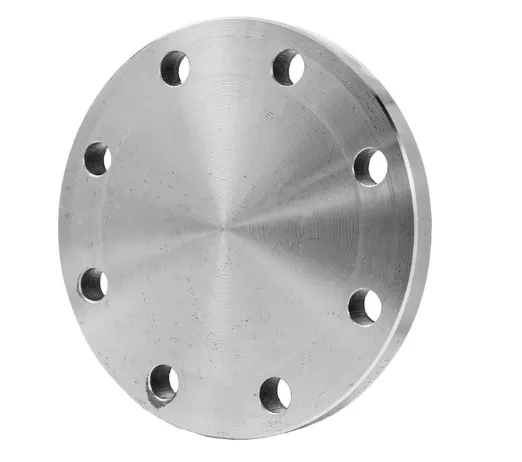-
Cangzhou Yulong Steel Co., Ltd.
-
Phone:
+86 13303177267 -
Email:
admin@ylsteelfittings.com
- English
- Arabic
- Italian
- Spanish
- Portuguese
- German
- kazakh
- Persian
- Greek
- French
- Russian
- Polish
- Thai
- Indonesian
- Vietnamese
- Zulu
- Korean
- Uzbek
- Hindi
- Serbian
- Malay
- Ukrainian
- Gujarati
- Haitian Creole
- hausa
- hawaiian
- Hebrew
- Miao
- Hungarian
- Icelandic
- igbo
- irish
- Japanese
- Javanese
- Kannada
- Khmer
- Rwandese
- Afrikaans
- Albanian
- Amharic
- Armenian
- Azerbaijani
- Basque
- Belarusian
- Bengali
- Bosnian
- Bulgarian
- Catalan
- Cebuano
- China
- China (Taiwan)
- Corsican
- Croatian
- Czech
- Danish
- Esperanto
- Estonian
- Finnish
- Frisian
- Galician
- Georgian
- Kurdish
- Kyrgyz
- Lao
- Latin
- Latvian
- Lithuanian
- Luxembourgish
- Macedonian
- Malgashi
- Malayalam
- Maltese
- Maori
- Marathi
- Mongolian
- Myanmar
- Nepali
- Norwegian
- Norwegian
- Occitan
- Pashto
- Dutch
- Punjabi
- Romanian
- Samoan
- Scottish Gaelic
- Sesotho
- Shona
- Sindhi
- Sinhala
- Slovak
- Slovenian
- Somali
- Sundanese
- Swahili
- Swedish
- Tagalog
- Tajik
- Tamil
- Tatar
- Telugu
- Turkish
- Turkmen
- Urdu
- Uighur
- Welsh
- Bantu
- Yiddish
- Yoruba

maalis . 07, 2025 06:23 Back to list
ANSI B16.5 Carbon Steel BL Flange
Navigating the intricacies of the industrial materials market can be a challenging endeavor, especially when it comes to components as specific as the blind flange. A “blind flange” refers to a solid disk used to block off a pipeline or fitting. This component plays a crucial role in pipeline systems, primarily seen in factories, refineries, and processing plants. Here, we explore the importance, application, and long-term benefits of selecting the right blind flange for industrial projects, rooted in years of experience and expertise.
Trustworthiness becomes a key factor when considering suppliers for blind flanges. It is imperative that suppliers are not only ISO certified but also have a verifiable record of quality assurance and customer satisfaction. Long-term partnerships with trusted suppliers can mean the difference between consistent operational success and costly system failures. Reviews and testimonials from industry leaders who have utilized specific blind flange products further cement a supplier’s reputation, while detailed case studies provide insight into real-world applications and challenges resolved through superior product performance. By selecting the right blind flange, companies maximize efficiency and cut down unforeseen maintenance costs. Properly chosen blind flanges facilitate routine inspections, adapt to modifications in pipeline configurations, and withstand fluctuating operational pressures. Emerging technologies in production are continuously driving improvements in flange materials and designs, ensuring that the components keep up with evolving industry requirements and environmental standards. Embracing these blind flange solutions goes beyond mere adoption of a product; it involves a strategic approach to integrating these components into existing systems to yield maximum benefits. Continuous educational efforts, led by industry associations and leading manufacturers, aim to guide stakeholders in understanding the critical impact of their choice and application of blind flanges. Such educational initiatives play a vital role in enhancing industry-wide knowledge, thereby elevating the collective expertise on the matter. In sum, blind flanges are indispensable to the stability and functionality of pipeline systems within industrial operations. Through careful selection, adherence to authoritative standards, and fostering trustworthy supplier relationships, businesses can ensure robust system performance. This strategic focus not only underscores operational dependability but also encapsulates a broader commitment to safe and sustainable industrial practices.


Trustworthiness becomes a key factor when considering suppliers for blind flanges. It is imperative that suppliers are not only ISO certified but also have a verifiable record of quality assurance and customer satisfaction. Long-term partnerships with trusted suppliers can mean the difference between consistent operational success and costly system failures. Reviews and testimonials from industry leaders who have utilized specific blind flange products further cement a supplier’s reputation, while detailed case studies provide insight into real-world applications and challenges resolved through superior product performance. By selecting the right blind flange, companies maximize efficiency and cut down unforeseen maintenance costs. Properly chosen blind flanges facilitate routine inspections, adapt to modifications in pipeline configurations, and withstand fluctuating operational pressures. Emerging technologies in production are continuously driving improvements in flange materials and designs, ensuring that the components keep up with evolving industry requirements and environmental standards. Embracing these blind flange solutions goes beyond mere adoption of a product; it involves a strategic approach to integrating these components into existing systems to yield maximum benefits. Continuous educational efforts, led by industry associations and leading manufacturers, aim to guide stakeholders in understanding the critical impact of their choice and application of blind flanges. Such educational initiatives play a vital role in enhancing industry-wide knowledge, thereby elevating the collective expertise on the matter. In sum, blind flanges are indispensable to the stability and functionality of pipeline systems within industrial operations. Through careful selection, adherence to authoritative standards, and fostering trustworthy supplier relationships, businesses can ensure robust system performance. This strategic focus not only underscores operational dependability but also encapsulates a broader commitment to safe and sustainable industrial practices.
Latest news
-
ANSI 150P SS304 SO FLANGE
NewsFeb.14,2025
-
ASTM A333GR6 STEEL PIPE
NewsJan.20,2025
-
ANSI B16.5 WELDING NECK FLANGE
NewsJan.15,2026
-
ANSI B16.5 SLIP-ON FLANGE
NewsApr.19,2024
-
SABS 1123 FLANGE
NewsJan.15,2025
-
DIN86044 PLATE FLANGE
NewsApr.19,2024
-
DIN2527 BLIND FLANGE
NewsApr.12,2024
-
JIS B2311 Butt-Welding Fittings LR/SR 45°/90° /180°Seamless/Weld
NewsApr.23,2024











